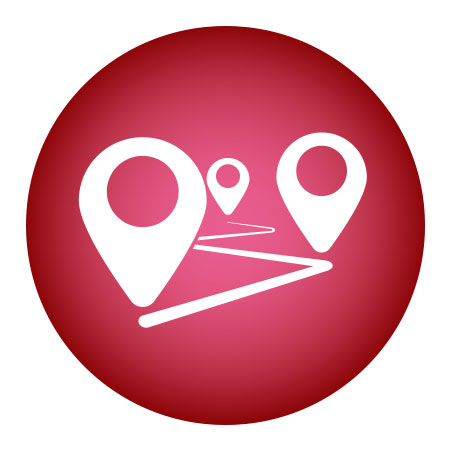Upsheren

What is the significance of this moment? What are some customs connected to this upsheren or chalakah ceremony?
It’s a special moment when those adorable curls surrounding that three-year-old face are cut. But the momentousness of this first haircut isn’t found in any of the poskim; it’s a minhag that’s been passed down in many families through the generations, particularly among the chassidic communities and those who live in Eretz Yisrael.
What is the significance of this moment? What are some customs connected to this upsheren or chalakah ceremony?
What’s in a Number?
Although the prevalent custom is to wait until a little boy is three to have his first haircut, there are communities that cut their boys’ hair earlier, while some do it even later. Skverer chassidim, for example, cut their little boys’ hair at the age of two, which was Shmuel Hanavi’s age when he was brought to the Mishkan, and was also Yitzchak Avinu’s age when Avraham Avinu made a feast to celebrate his weaning.
In his sefer Simchas Hachalakah, Rav Zevik Harel notes that the age of three has a historical source: Since Avraham Avinu first discovered Hashem at the age of three, he implanted within his descendants the ability to begin to enter into a relationship with Hashem at this age. Indeed, the Rema notes that when a child reaches the age of three, one can begin teaching him the letters of the alef-beis.
The significance of the third year in this regard is also mentioned in Midrash Tanchuma in parshas Kedoshim, where we are taught that during the first three years of its life, a fruit tree is orlah and it’s forbidden to eat its fruit. In the fourth year, the fruit is kodesh hillulim, dedicated with joy to Hashem. The Midrash sees the fruit tree as analogous to a child, since man is compared to a tree. During the first three years of a child’s life, he is still mastering speech. In his fourth year, his father begins to teach him Torah, beginning a lifetime of connection with Hashem.
Noam Elimelech develops this imagery further, stating that man can be compared to a fruit tree, with our roots found in Heaven. Avraham Avinu impacted us on the root level — so that we can begin dedicating ourselves exclusively to Hashem at the start of the fourth year.
Rav Shmuel Yerushalmi, in his sefer Ma’aglei Hachayim, connects the phrase kodesh hillulim to the word hillula, or yahrtzeit, which links this hair-cutting ceremony to Lag B’omer, the hillula of Rabi Shimon bar Yochai.
In Kuntras Otzar Hayidos, Rav Yechiel Michel Stern quotes Ateres Yeshuah, who finds another reference in the Chumash to the minhag of cutting a child’s hair at age three, on Lag B’omer. When the Torah discusses a person with tzaraas, the word v’hisgalach — and he shaved, is written with a large letter gimmel, hinting that age three is an appropriate time to first shave a child’s hair (Vayikra 13:33). This pasuk is the 33rd, which hints to Lag B’omer being an auspicious time to cut the child’s hair.
I’m a Jew and I’m Proud
What’s the connection between a child beginning to learn Torah and discover Hashem and him getting a haircut? Rav Harel notes that the first Rema in Orach Chayim emphasizes how a Jew needs to feel pride in his Jewishness, and not be self-conscious about serving Hashem. The focus of the first haircut is about leaving the peyos at the side of the head uncut, in keeping with the issur of cutting off the sidelocks. These peyos serve as a public sign (indeed, the Yemenites refer to peyos as simanim, signs), and a message we give over to the little boy: Feel your specialness as a Jew and wear them with pride. The Sanz-Klausenburg Rebbe ztz”l used to emphasize that the peyos serve as a protection, keeping the child safe from the ways of non-Jews.
On a deeper level, the Kozhnitzer Maggid, in his sefer Avodas Yisrael, explains that the word se’ar, hair, is related to the word sha’ar, a gate. On a mystical level, the peyos are a gate that allow the Divine light to enter into the child and become a conduit for the flow of knowledge. The Ropshitzer Rebbe, in his sefer Zera Kodesh, adds that the peyos also create the connection between the head and the heart. At three, when the child begins to enter into the arena of learning Torah, his peyos becomes the spiritual conduit for the flow of information and spiritual transformation.
Simchas Hachalakah explains that there’s also significance in the actual cutting of the hair, not just in leaving the peyos. We find a number of places in the Torah where individuals were obligated to cut all of their hair — think a metzora, a nazir, and the Leviim, when they were initiated into the service of Hashem. Rav Shimshon Rapahel Hirsch notes that symbolically, hair forms a barrier on a person, reflecting that a person is living for himself, an egotistic existence. Shaving his hair therefore symbolizes moving away from a focus on one’s self to embracing others. Hence the Leviim shaved their hair when they took on the role of servicing the people, and a nazir and a metzora, who were separated from the rest of the nation, cut their hair when they were reintroduced into the community.
This distinction helps us understand Eisav, who is called an ish sa’ir, a hairy person. Eisav is the epitome of one who was self-absorbed. Yaakov Avinu is referred to as an ish chalak, a smooth person. It was Yaakov who taught us how to be givers and see ourselves as part of the Jewish People, each contributing our uniqueness to the whole. In his kuntras on Lag B’omer, the Yerushalmi mekubal Rav Yeshaya Asher Zelig Margolis notes that the term chalakah is derived from ish chalak. At three years old, we begin to teach the child to become a giver, to share with others, to be concerned with their needs.
Rav Gavriel Zinner adds that hair is a sign of haughtiness. The Navi describes Avshalom’s hair as a source of pride for him. In cutting the child’s hair, we remove this pride, thereby giving him the humility to be able to learn from others, and to share with them.
The Meron Connection
Many people have the custom to travel to Meron and do the chalakah at the kever of Rabi Shimon bar Yochai. Rav Chaim Vital describes how his rebbi, the Ari Hakadosh, did so. Rabi Shimon bar Yochai made a promise that the Torah will never be forgotten; it’s therefore appropriate to daven at his kever at this juncture that this child will grow up to be a living continuation of the torch of Torah.
Maseches Makkos (17b) discusses how every mother should daven that her children become like Rabi Shimon bar Yochai. The time of the chalakah is an auspicious time for parents to daven that they will grow up to be like this great Tanna.
Rav Gamliel Rabinowitz shlita, in his sefer Tiv Meron explains that the custom of carrying a child on his father’s shoulders at his chalakah reflects our high hopes for the child. At the time of the chalakah, parents should daven that their child achieve this level of greatness.
Another connection with Rabi Shimon bar Yochai is a gemara in Maseches Me’ilah that describes how a Jew masqueraded as a non-Jew to try and offset negative decrees that had been enacted by the Roman rulers, but wasn’t successful. Rabi Shimon bar Yochai, dressed as a Jew, was successful in thwarting the decrees. He was a paradigm of one who wasn’t afraid to show his loyalty to Hashem. Since on Lag B’omer we celebrate the greatness of Rabi Shimon, many people wait until Lag B’omer to do the chalakah. Others are careful to cut the hair on the child’s third birthday, but will travel to Meron to do so.
Two other kevarim people have the custom of visiting for a chalakah are the graves of Rabi Shimon Hatzaddik and Shmuel Hanavi. Shimon Hatzaddik once ate from the korban of a nazir, showing his appreciation for shaving one’s hair l’sheim Shamayim. Shmuel Hanavi was dedicated by his mother to the total service of Hashem, so his kever is an auspicious place to daven that this child will dedicate his life completely to Hashem.
Beautifying the Mitzvah
Nitei Gavriel notes that we dress a child in special clothes for this occasion, and that there is a Yerushalmi minhag for his parents to wear Shabbos clothes as well. Many people have the minhag to visit tzaddikim and ask them to cut the child’s hair and give him a brachah. Some are careful that a Kohein should be the first to cut the child’s hair, followed by a Levi. Relatives then cut some of the locks, and bless the child. There is also a custom to have a chassan on the day of his wedding cut the hair, to add another level of simchah to the occasion.
Many people have the minhag to give the child money to give to tzedakah. Some weigh the hair, then calculate the worth of its weight in gold or silver and give that amount of money to tzedakah. Many people curl the peyos to beautify the mitzvah. Shu”t Pe’ulos Tzaddik notes that it’s customary to make a feast on this occasion, and it’s considered a seudas mitzvah.
On the day of the upsheren itself, we should sing praises to Hashem, and be filled with joy at the opportunity to celebrate this milestone. And as the little boy licks the honey from the letters of the alef-beis, we daven that he always taste the sweetness of Torah.
(Originally featured in Family First, Issue 740)
Oops! We could not locate your form.


